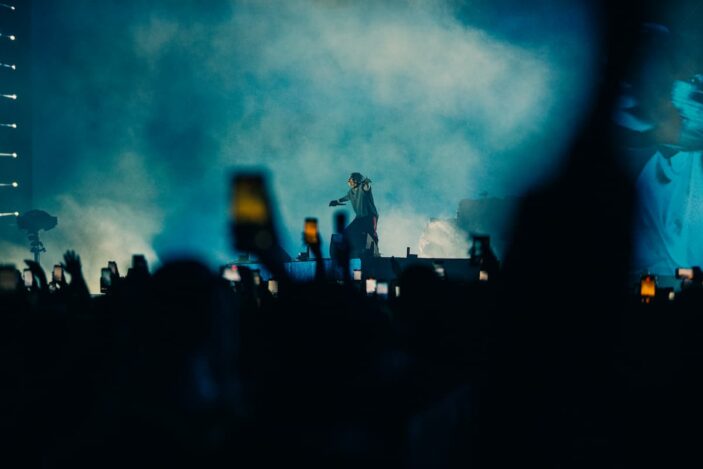
I still remember the cracks clearly. The first one reverberated up my right leg to let me know something was wrong, while the second immediately followed and sent me into a panic. A sprain? Annoying. It’ll heal. But how did I sprain my foot at a concert?
It’s Halloween in 2010 and I’m watching Nas, flanked by two guitarists, explode into his set with “Hip Hop Is Dead.” The crunching guitar riffs hit harder than the legendary emcee’s booming, fluid vocals. The four or five kids around me start jumping excitedly and moshing. Moshing? At a hip hop concert?
At the risk of sounding out of touch, I remember when people started moshing at hip hop concerts. It wasn’t always a thing. It was kind of a new development. Prior, you’d just stand there and bop up and down, vibe and wave your arm while mouthing LL Cool J lyrics. You wouldn’t act like you were at a Muse concert in the front row.
And yet, that’s what I had to do to avoid getting thrashed by these hoppy Nas fans. When those around you jump, you should too. My foot landed hard at one point, with the front half on the raised metal platform of the barrier, and the back half slamming down on the Enmore Theatre floor. I had fractured my foot in two places.
This is by no means a complaint. I’ve jumped around like a prolifically uncoordinated and overexcited child at gigs plenty of times. My point is that you would never really see it at a hip hop show pre-Odd Future: the most salient paradigm shift in what a hip hop crowd looked like, and how it would move.
Things are much different now. And it’s informed the way rappers perform.
Days Before Rodeo
When Travis Scott burst onto the scene, no one could have guessed that he was primed to be hip hop’s most explosive performer. In 2013, a barely-known Scott would grab the industry’s attention by not only working with Kanye West (he programmed some of the drums on Yeezus), but also JAY-Z on the Blueprint 3 and T.I.
Having three hip hop heavyweights in his corner would give Scott a huge leg up in the industry, pushing him towards becoming a household name with classics Rodeo and Astroworld. But tragedy is, unfortunately, what truly made the name Travis Scott echo throughout the world. And it sparked actual conversations about how responsible artists are for their fans, especially in a live setting.
Cactus Jack is all the rage
“Stand on the stage, I give ’em the rageNo turnin’ it down, can’t tame it, can’t follow it”
– Travis Scott, “MY EYES”
First we got crunk, then we got lit. Now, we just rage.
Aggressive styles of music like metal (and its many sub-genres) are more readily associated with circle pits. They’re also more readily associated with social responsibility. Head to any metal gig and you’ll see circle pits form all over the place, with surface-level machismo dripping from shirtless boys as they’d throw caution to the wind and aggressively slam into each other, purging their emotions with some vaguely controlled chaos.
The only rule: if someone falls, you pick them up with absolutely no hesitation. It’s not an unspoken one either; the bands regularly repeat the message.
That rule is kind of lost on a (younger) hip hop crowd. I’ve seen it multiple times now, and the reason is almost always the artist being too permissive and not showing any kind of vigilance. Love your fans, but know when it’s time to tell them off.
While I think in general artists need to address their toxic fandom with much more regularity (Taylor Swift’s reluctance to call out her fans’ borderline psychotic and bullying behaviour contradicts her pristine image, for example), it’s especially frustrating in a live setting when it’s glaringly obvious that people might get hurt.
Watching from a distance, I could see just how unbelievably high the energy on the floor was for Travis Scott. That was a given. Of course. But it’s intensified because of how undeniable the Houston rapper is on the stage. He springboards into the air for opener “HYAENA,” runs “FE!N!” back several times with his manic adlibs egging the crowd on as they rage, and never misses a chance to work some fire-belching pyrotechnics into the mix.
On the first or two nights, he even pulls a surprise appearance from Sheck Wes who joins Scott to perform “Mo Bamba,” an anthemic song that’s almost entirely purposed towards mosh pits. On the second, he brought out The Weeknd. The value of his performance is unquestionable, and I don’t see any Travis Scott fan being disappointed with his performance.
Scott knows precisely what’s going to make the crowd burst at the seams with excitement. He knows when to cut a song off and bring it back. He knows exactly how to build, and build, and build only to release and watch as the crowd, quite literally, goes crazy. He knows how to milk the energy from his fans, channel it, and shoot it back tenfold. He is a conduit and his live shows are electric.
I feel sick linking to them because I believe this particular media outlet is the single most toxic entity on the internet (equalled in consequence-free obnoxiousness only by TMZ) but this week Daily Mail posted a video of a fan in Sydney being choked and thrown to the ground in a circle pit. It didn’t look good.
Was Travis Scott to know? Of course not. He wouldn’t have been aware of the Astroworld tragedy while it was happening either. But having that kind of disconnect from your fans when you’re up on a stage as large as the one at Accor Stadium isn’t much of an excuse. Especially for someone with Travis Scott’s history.
Does Travis Scott care?
“And it ain’t a mosh pit if ain’t no injuries
I got ‘em stage divin’ out the nosebleeds”
– Travis Scott “Stargazing”
It would be too cynical to think that Travis Scott, especially as a family man, doesn’t genuinely care about safety at his concerts. People have died on his watch. A man was paralysed at one of his New York concerts in 2017. Not caring about that would be sociopathic.
But it’s clear the man could be doing more to adapt to the issues his performance style can cause for people. There’s barely any communication from him; briefly pausing a show to check in with the fans and reiterate the importance of safety should not just be an option. Metal bands make it a point to check in with the crowd every so often, because they know how aggressive their music can make others (especially when emotions are running high). It’s not like this is a radical suggestion.
I don’t want to see hip hop concerts stigmitised as dangerous. I don’t want to watch legacy media knowingly inflame anti-rap sentiment to drum up social media engagement from pearl-clutching closet racists. I don’t want promoters to have a hard time booking hip hop concerts.
But I do want to see rappers like Travis Scott tell some of their fans to absolutely fuck off with that pathetic display of faux masculinity that essentially causes these issues. Because at the end of the day, if something happens, it falls back on Travis Scott. And that’s not only unfair to the artist these people claim to worship, it’s a burden on the culture of live music and particularly hip hop.
Hip hop is not violent. Stupid people are. Travis Scott put on an exceptional show. A few unbearably faux-tough kids trampled all over the opportunity and now the tired old stigma that’s used to demonise these artists is being perpetuated. When will it end? When artists, the ones these children will listen to, tell them to fuck off and show a little respect – to the performer, the venue, their fellow concertgoers, and everyone who works so ridiculously hard to make something of this magnitude happen.
Photos by Charlie Hardy.
